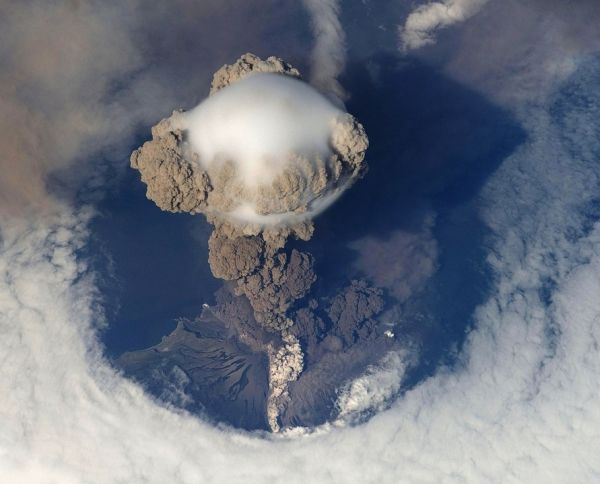The eruption of Mount Pinatubo in 1991 had a significant impact on climate, decreasing global mean temperature by about 0.5°C. Like the famous eruptions of Krakatau (1883) and Tambora (1815), Pinatubo is located in the tropics, which has been considered an important factor underlying its strong climate forcing. However, an international research group led by the GEOMAR Helmholtz Centre for Ocean Research Kiel has published today a study in the journal Nature Geoscience that shows that explosive extratropical eruptions can have a strong impact on the climate too.
In recent decades, extratropical eruptions including Kasatochi (Alaska, USA, 2008) and Sarychev Peak (Russia, 2009) have injected sulfur into the lower stratosphere. The climatic forcing of these eruptions has however been weak and short-lived. So far, scientists have largely assumed this to be a reflection of a general rule; that extratropical eruptions lead to weaker forcing than their tropical counterparts. Researchers from the GEOMAR Helmholtz Centre for Ocean Research Kiel, the University of Oslo, the Max Planck Institute for Meteorology in Hamburg together with colleagues from Switzerland, the UK and the USA now contradict this assumption in the international journal Nature Geoscience.
"Our investigations show that many extratropical volcanic eruptions in the past 1250 years have caused pronounced surface cooling over the Northern Hemisphere, and in fact, extratropical eruptions are actually more efficient than tropical eruptions in terms of the amount of hemispheric cooling in relation to the amount of sulfur emitted by the eruptions," says Dr. Matthew Toohey from GEOMAR, first author of the current study.
Read more at Helmholtz Centre for Ocean Research Kiel (GEOMAR)
Photo Credit: WikiImages via Pixabay


